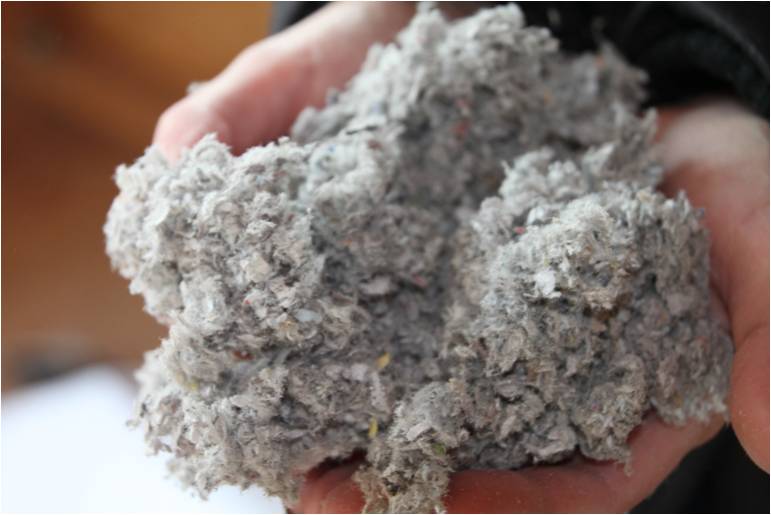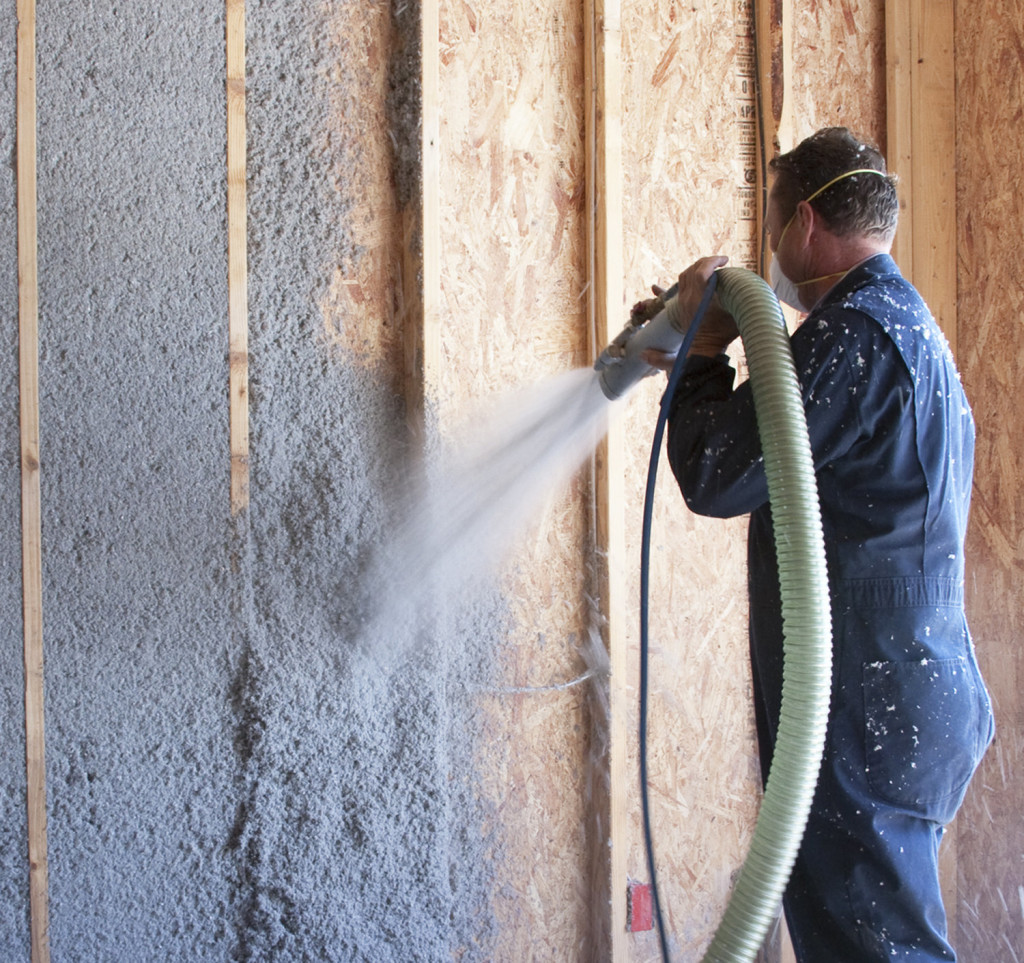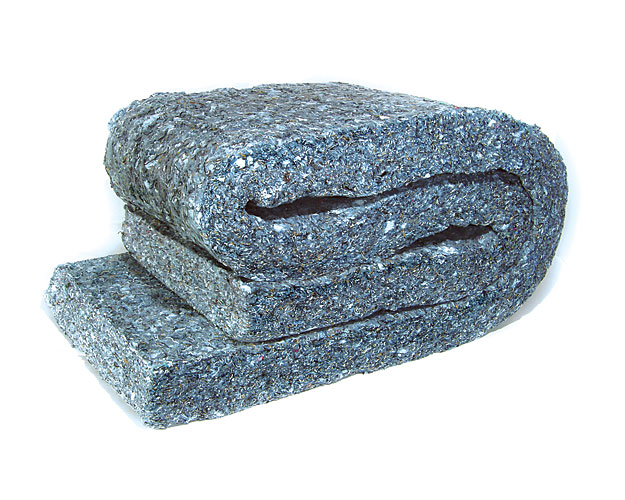Paper as Insulation
At the firm as part of our conversation around insulation types, one of the Principals, Marty, mentioned that we have been using newspaper to insulated walls for hundreds of years. Indeed if anyone has done a renovation or addition to a home in Toronto from the early 1900’s, they might have found old newspapers still well preserved: what a blast from the past! Looking at the history books shows that Cellulose insulation has a long history. Monticello, Thomas Jefferson’s estate in Virginia, built in the 1772 even used a similar material.
This week’s post will look into cellulose insulation (i.e shredded up newspapers). Cellulose insulation is plant fiber, most often newspaper, but also cardboard, cotton, straw, sawdust, hemp and corncob. It is a non-hazardous, natural material which has a very low emboddied energy (it in fact emboddies carbon). Modern cellulose insulation is made from newspapers: a close look makes this clear as often little bits of newspaper font are visible. There is also a fire-retardant (boric acid and sometimes ammonium sulfate — also used as an additive in bread and flour — and considered food safe), but other then that the material is inert and harmless. Another benefit is that cellulose insulation is often over 75% recycled content (from old newspapers), which makes it a sustainable and in fact carbon-negative product.
There was a large explosion in the use of cellulose insulation during the Oil Crises of the 70’s in the US, but it fell from favour due to issues around fire-retardance and spurious claims by competing insulation manufacturers attempting to dampen enthusiasm (or so it is said). Further research into Cellulosic insulations properties suggest that it can preform better on fire-tests in walls then fiberglass insulation due to having a higher density.
There are in general four types of cellulose insulation:

1.) Loose Fill – In this application the cellulose is loose and dry. It is blown into an attic, wall cavity, or floor. It can be used on new or existing houses. The method is simple: when access to the cavity is not possible a hole is drilled in the top of a wall and the cavity is filled. Where access is possible it can be sprayed from above. One concern with this method is that the loose material settles over time by up to 20%. This leaves hollow air spaces at the top cavity of the wall. Claims that this does not happen, or that proper training can mitigate this should be treated with sketicism as gravity and logic dictate this settling.

2.) Wet Spray – In this application the cellulose is mixed with water, chlorine, and an adhesive or binder, and sprayed onto a wall much like spray foam. This method can be used on new construction while the wall cavity is open. An advantage of this method over Loose Fill is that there is little-to-no settling, a better airbarrier can be formed, and due to being able to see the cavity, vertification of a good application is forthcoming.
3.) Stabilized – This application is for attics, and is a mix of the two above: only a tiny bit of water is added to create a material which again does not settle as much.

4.) Batt – Cellulose can also be formed into large fluffy sheets, like fiberglass insulation, known as batts which are then inserted into the study and rafter cavity. In this method there will be no slumping due to the stabilized nature of the cellulose. Assembly is also easy and can be done by someone with only a little training on best practices. However looking into the Material Safety Datasheets for Cellulose batt, there seems to be upwards of 20% Polyester. We’re not sure why this is added.
An intersting point is that cellulose insulation manufacturers recommend not using a vapour barrier. Apparently because air movement is responsible for problems related to moisture, and because cellulose has a high density (especially in dense-fill application — see below) the ability for air to move around is minimized.
Overall it seems like the use of cellulose as an insulation material makes a lot of sense from a sustinability as well as performance perspective. It also seems like it can be a good material for indoor air quality: there are no Volative Organic Compounds or Formaldehyde and the material is inert. There is some cause for wonder, at the complexity and lengths which insulation manucfacturers go to to create “insulation” which cellulose manufactures can produce with a grinder and stacks of newspaper.
We’ll keep you updated as we progress our research and experimentation with this material.
